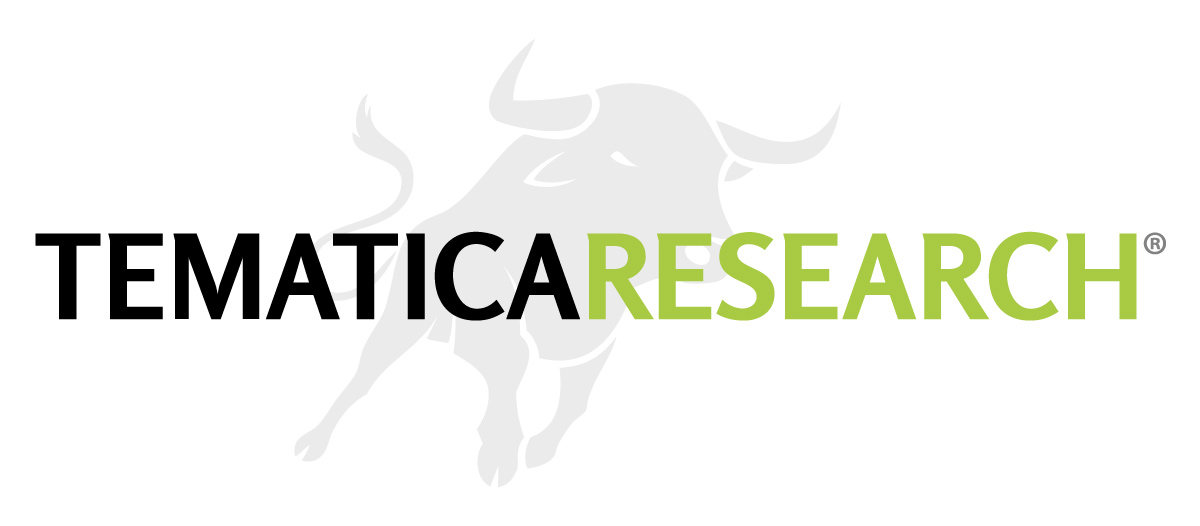More Eurozone monetary stimulus chatter and a push out on any potential interest rate hikes by the Fed
 If you’re a fan of roller coasters like we are here at Tematica, then the move in the stock market did not disappoint last week.
If you’re a fan of roller coasters like we are here at Tematica, then the move in the stock market did not disappoint last week.
While the S&P 500 closed Friday up 1.6 percent from where it started on Monday, a closer look shows that once again the index and others experienced a see-saw pattern. Despite the continued market rebound, all the major market indices are still in the red on a year to date basis and anxiety over the direction of the global economy continued to rise.
While Mr. Stock Market has taken some solace in the modest rebound with oil prices, the harsh reality is there is more oil related fallout to be had:
- Comments from the CEO of Devon Energy ([stock_quote symbol=”DVN”]) imply most US shale producers need $55-$60 oil to work.
- We’re beginning to hear about more oil related layoffs as Halliburton ([stock_quote symbol=”HAL”]) cut another 5,000 jobs following up on cuts of 4,000 jobs in the December quarter.
- Wells Fargo ([stock_quote symbol=”WFC”]) has set aside $1.2 billion for potential oil and gas sector loan losses as different forecasts suggest up to 35% of public oil companies could face bankruptcy.
- JP Morgan ([stock_quote symbol=”JPM”]) revealed this week it is taking out a $500 million reserve provision against energy credit losses.
- A report from Deloitte found 175 such companies are facing “a combination of high leverage and low debt service coverage ratios.”
Odds are more financial institutions than just Wells Fargo and JPMorgan will be hit should Deloitte’s ratio analysis is deemed to be correct, and this is something we’ll be watching for on our radar screens.
Getting back to stocks
If you’re not a fan of volatility, then we’d recommend averting your eyes as we take a look at the NYSE McClellan Oscillator (an indicator or market breadth based on the number of advancing and declining issues on the NYSE). This indicator has rebounded sharply over the last few days, past levels from which we’ve seen pullbacks in the market.
Another reason to be cautious as global growth are likely to be further adjusted in the coming days.
That’s a pretty good segue to shift our view from the rear view mirror to the front view, which means tackling what’s on deck in the week ahead.
As we exit the month of February and enter into March — the last of the first quarter of 2016 — we’ll start to get our first hard look at how the global economy performed in February. Pairing the data with that from January will yield a clearer picture on the economic glide path for the current quarter.
Last week brought some preliminary reads with the Flash PMI reports from Markit Economics, which pointed to slower growth in the domestic manufacturing and service economies in February. The same report for manufacturing and services in the Eurozone revealed those rates of growth slowed month over month in February, hitting the lowest levels in over a year.
This week we not only get the PMI reading for China’s economy, but also have the opportunity to dig into data and uncover greater details inside the final February PMI reports for the US and Eurozone. The economy in China is expected to have contracted even further in February, which would mark the seventh consecutive monthly decline in China’s manufacturing sector. Per a poll conducted by Reuters based on 23 economists, China’s official manufacturing Purchasing Managers’ Index (PMI) is expected to dip to 49.3 in February from 49.4 a month earlier.
Helping round out the domestic view, we’ll also get the ISM’s take on manufacturing and services activity for February. While there were several snowstorms across the country in February, they were far less onerous than Winter Storm Jonah that immobilized much of the Mid-Atlantic and East Coast in late January. Buried inside the ISM reports on February, we will find not only our first look on what economic activity in March is shaping up to look like thanks to the order and backlog figures, but we also will get a taste of February job creation.
That taste will become a mouthful as we get several other job creation data points ahead of Friday’s February Employment Report. We are keenly interested in that report for several reasons:
- First, the last few months have delivered sequentially slower job growth – not a good sign, but one that reflects the growing concern over the vector (direction) and velocity (speed) of the domestic economy.
- Second, the February Employment Report is the first in several that lacks any real influence from the holiday shopping season, so it tends to give a clearer view on true job creation vs. seasonal part-time hiring and firings that can cloud the data.
If the all of the above data comes in as suggested — showing slower job growth in a slower growth global economy — we expect to be hearing more about monetary stimulus efforts inside the Eurozone and China, and the push out on any potential interest rate hikes by the Fed here in the US. Should this come to pass, we would expect to see the dollar gain some ground with greater demand for US Treasuries that back iShares Barclays 20+ Year Treasury Bond ETF ([stock_quote symbol=”TLT”]). That means there is a high probability we will hearing comments like these yet again when the quarterly corporate earnings machine firs up in about six weeks:
For 2016, we are forecasting to benefit from the impact of lower fuel prices, which we expect to be partially offset by the stronger dollar. The net favorable impact of lower fuel prices and currency included in our guidance is $0.22 versus the prior year.
— Carnival (Dec. 18)
Positive sales mix and net price realization increased sales by 1 point while foreign exchange reduced sales by 4 points.
— General Mills (Dec. 17)
Winding down the current earnings season
We have to admit we are less than enthused at the prospects of the cycle repeating in just over a handful of weeks, but such is our lot in life. The fact that the current season is nearly over means we have a pretty firm view on what it means in aggregate.
With results from 96% of the S&P 500 companies in, the blended earnings view for 4Q 2015 is a decline of 3.3 percent. According to data from FactSet, this marks the first time the index has seen three consecutive quarters of year-over-year declines in earnings since 1Q 2009 through 3Q 2009.
We’ve commented over the last few weeks about the continued step down in earnings expectations for the S&P 500 group of companies. Exiting last week, expectations now call for just a 3.2 percent increase to $121.78 per share in 2016 – a far cry from the up 10 percent called for in October. If we account for the rampant use of buyback programs by those 500 companies, it means year over year Net Income growth in 2016 is even slower.
We’ll continue to focus our Tematica Select List on those companies that are poised to benefit from thematic tailwinds and are growing their profits, which to us means Operating Income and Net Income, faster than their peers.
As we look to hone in on those candidates we will be paying attention to a number of earnings reports this week. Here are some of them grouped by our investing themes:
- Safety & Security — Smith & Wesson (SWHC), Taser International (TASR)
- Cash-Strapped Consumers — Costco Wholesale (COST), Kroger (KR), Ross Stores (ROST)
- Aging Population — Physicians Realty Trust (DOC)
- Connected Society — Broadcom Ltd. (AVGO), Barnes & Noble (BKS)
- Foods with Integrity — The Fresh Market (TFM)
- Economic Acceleration/Deceleration — Hertz (HTZ), Joy Global (JOY), Navistar (NAV)
- Fattening of the Population — Adidas AG (ADDYY), Big Five Sporting Goods (BGV), Dick’s Sporting Goods (DKS), Planet Fitness (PLNT), Vivus (VVUS), Wingstop (WING)
- Rise & Fall of the Middle Class — American Eagle Outfitters (AEO), Abercrombie & Fitch (ANF)
- Affordable Luxury — Del Frisco’s (DFRG)
ECONOMIC CALENDAR, FEB. 29 – MAR. 4, 2016 |
||
| DATE | REPORT / SPEECH | DATA |
| 29-Feb | Chicago PMI | Feb |
| 29-Feb | Pending Home Sales | Jan |
| 1-Mar | Construction Spending | Jan |
| 1-Mar | ISM Index | Feb |
| 1-Mar | Auto Sales | Feb |
| 1-Mar | Truck Sales | Feb |
| 2-Mar | MBA Mortgage Index | 27-Feb |
| 2-Mar | ADP Employment Change | Feb |
| 2-Mar | Crude Inventories | 27-Feb |
| 2-Mar | Fed’s Beige Book | Mar |
| 3-Mar | Challenger Job Cuts | Feb |
| 3-Mar | Initial Claims | 27-Feb |
| 3-Mar | Continuing Claims | 27-Feb |
| 3-Mar | Productivity-Rev. | Q4 |
| 3-Mar | Unit Labor Costs-Rev. | Q4 |
| 3-Mar | Factory Orders | Jan |
| 3-Mar | ISM Services | Feb |
| 3-Mar | Natural Gas Inventories | 27-Feb |
| 4-Mar | Nonfarm Payrolls | Feb |
| 4-Mar | Nonfarm Private Payrolls | Feb |
| 4-Mar | Unemployment Rate | Feb |
| 4-Mar | Hourly Earnings | Feb |
| 4-Mar | Average Workweek | Feb |
| 4-Mar | Trade Balance | Jan |

